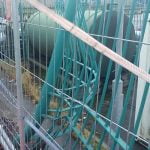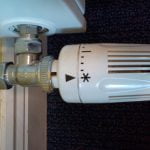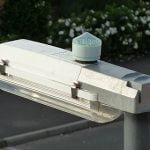Ensure your building or work environment gets the protection it needs over the winter months.
Below are ten of our top tips from observations and knowledge accrued over the years to help protect the services within your building.
If you need any additional information, please contact your service engineer, or email us.
View below or download » ![]() Download Thermodial 10 Top tips for winter [pdf 248 KB].
Download Thermodial 10 Top tips for winter [pdf 248 KB].
| 1
|
Boiler serviceHave a standard combustion test carried out on your boiler. As the winter is a period of high energy use, why have unnecessary waste? The combustion test measures efficiency of the boiler. It is carried out by your maintenance provider by getting a print out from the control panel. During a recent first service visit at a school we upped the efficiency of the boiler by 20%. |
| 2
|
Leaf checksPeriodically check that gutters and drains are clear of leaves, to ensure flooding doesn’t occur. We have found that roofs and car parks are particularly susceptible to flooding as a result of blocked drains. Leaves can also accumulate in other places. |
| 3
|
Oil tank security
Have you checked the security around your oil tank? With the price of fuel increasing, thieves are going to greater lengths to steal oil from business premises. It’s worth putting a few preventative measures in place to protect your investment. Did you know that someone could have made off with up to € 45,000 worth of fuel from raiding this tank if it was full? |
| 4
|
Critical spare partsHave critical spare parts for the heating system available on site. In the past we have found that ordering replacement parts during severe weather conditions increases considerably the delivery time, due to travel restrictions. Often parts then arrive too late. Recent EU energy efficiency directives mean that some pumps will no longer be supplied from 1/1/2013. This will cause an issue with delivery times and could lead to changes in the pipework. |
| 5
|
Lagging and insulationPlan for likely events, such as frost or snow. Check that all pipework is lagged and insulated, as during the summer birds can often peck away and damage insulation. Often the problem is only noticed when a pipe bursts. Having less insulation or exposed pipes is also a waste of energy. |
| 6
|
ImmersionIs your immersion at the correct setting, to avoid any unnecessary electricity wastage? If you are using the heating system to heat your water, why is the immersion on? Ensure you check this out, it may save you money. |
| 7
|
Cladding/protection around insulationCheck all cladding and insulation is in place. Cladding is the protection around insulation. We have found it blowing off roofs during the recent high winds. Also ensure that it hasn’t been damaged by anyone carrying out works in the vicinity. |
| 8
|
Inoccupation
Ensure your building is prepared for a period of inoccupation. Ensure that all services are not switched off when staff are leaving, as this would expose the building leaving it unprotected. i.e. don’t switch radiators off, simply twist the knob to frost protection mode as shown.
|
| 9
|
Frost protectionExternal and internal thermostats provide frost protection. They are in place to automatically switch on your heating plant in the event of cold weather. Ensure that your maintenance company has checked these thermostats. |
| 10
|
Clean photocells
|
|
FINAL TIP |
SALT It may be useful to have a supply of salt to clear paths and walk ways in front of your premises. This will aid customers and staff during any severe artic weather conditions. Salt became difficult to buy once ice appeared in previous winters. Stock up now using this useful link: rocksaltireland.com |
If you would like some further information on securing your building or work environment with HVAC planned preventative maintenance, please contact us.



 Ensure that photocells are serviced and clean. A photocell is often placed on top of lights and limits the flow of an electrical current until the actual cell comes into contact with light. Periodically check that they are only functioning during hours of darkness and not wasting energy. Keeping them clean will also ensure they function only during hours of darkness.
Ensure that photocells are serviced and clean. A photocell is often placed on top of lights and limits the flow of an electrical current until the actual cell comes into contact with light. Periodically check that they are only functioning during hours of darkness and not wasting energy. Keeping them clean will also ensure they function only during hours of darkness.